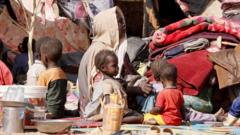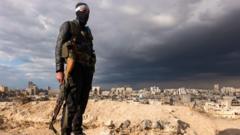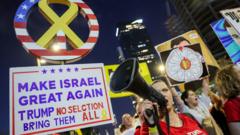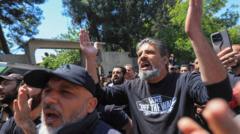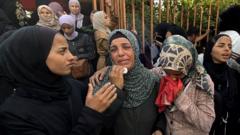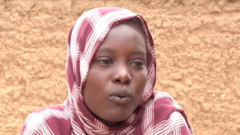The situation in South Sudan, the world’s newest nation, has deteriorated sharply with increasing violence and political strife threatening its long-unsettled peace agreement.
South Sudan Faces Renewed Conflict as Tensions Rise

South Sudan Faces Renewed Conflict as Tensions Rise
A recent attack on a U.N. helicopter signals escalating instability in South Sudan, once again jeopardizing a fragile peace deal from 2018.
The outskirts of Juba, South Sudan’s capital, are now marked by fresh violence, with a recent incident involving the attack on a United Nations helicopter, resulting in one crew member’s death and two others injured. This helicopter was engaged in an evacuation mission to rescue wounded government soldiers following clashes with an armed group in the northeastern Upper Nile State. In light of these security threats, the United States ordered the withdrawal of nonemergency personnel from the nation.
This unsettling development highlights the fragility of peace in South Sudan, which gained independence nearly fourteen years ago amid significant optimism. The clashes and accompanying political turmoil are raising concerns among regional analysts about the potential for the collapse of the peace agreement reached seven years ago, which sought to stabilize the nation after years of civil war.
Key questions arise in light of the renewed conflict: Who are the parties involved in the fighting? What triggered this latest escalation? Have recent U.S. aid cuts influenced the situation? What role is Uganda playing in this context? What are the likely outcomes moving forward?
The fighting appears to engage two primary factions: the national army supporting President Salva Kiir and the insurgent group known as the White Army, which aligns itself with Vice President Riek Machar. Tensions between Kiir and Machar date back to the civil war that ignited in 2013. The 2018 agreement aimed to de-escalate hostilities by militarily demilitarizing Juba, regulating oil revenue sharing, and reinstating Machar as vice president.
Despite this framework, entrenched political and ethnic divisions persist. Militia groups with variable allegiances further complicate the security landscape. Reports suggest frequent violence associated with ethnic rivalries, particularly between Kiir’s Dinka and Machar’s Nuer communities, exacerbating displacement issues and triggering a severe economic crisis that has caused skyrocketing food and fuel prices in the country.
This unsettling development highlights the fragility of peace in South Sudan, which gained independence nearly fourteen years ago amid significant optimism. The clashes and accompanying political turmoil are raising concerns among regional analysts about the potential for the collapse of the peace agreement reached seven years ago, which sought to stabilize the nation after years of civil war.
Key questions arise in light of the renewed conflict: Who are the parties involved in the fighting? What triggered this latest escalation? Have recent U.S. aid cuts influenced the situation? What role is Uganda playing in this context? What are the likely outcomes moving forward?
The fighting appears to engage two primary factions: the national army supporting President Salva Kiir and the insurgent group known as the White Army, which aligns itself with Vice President Riek Machar. Tensions between Kiir and Machar date back to the civil war that ignited in 2013. The 2018 agreement aimed to de-escalate hostilities by militarily demilitarizing Juba, regulating oil revenue sharing, and reinstating Machar as vice president.
Despite this framework, entrenched political and ethnic divisions persist. Militia groups with variable allegiances further complicate the security landscape. Reports suggest frequent violence associated with ethnic rivalries, particularly between Kiir’s Dinka and Machar’s Nuer communities, exacerbating displacement issues and triggering a severe economic crisis that has caused skyrocketing food and fuel prices in the country.



